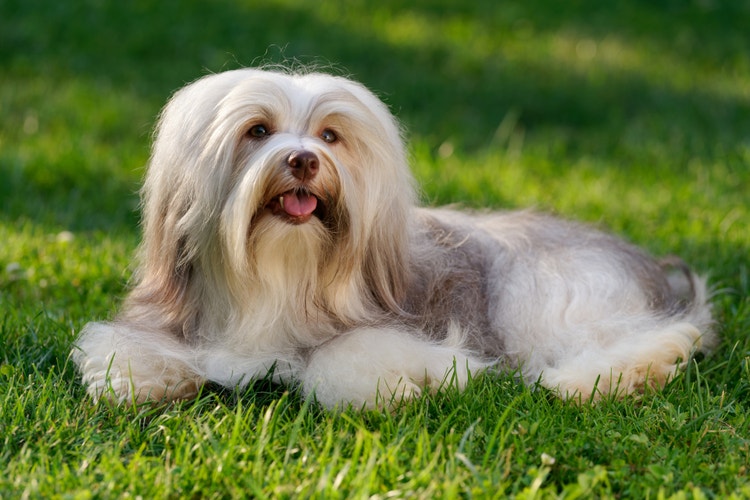

Havanese


Where Are Havanese Dogs From?
The Havanese found their way to Cuba on trips with Spanish farmers and Italian noblemen in the early 1500s. They were initially used as bargaining items, and are believed to have descended from the Bichon Tenerife and the Poodle. They became popular among the wealthiest Cubans and were named after capital city of Havana. They became the national dog of Cuba in 1993, and were recognized by the American Kennel Club in 1996.
Because of their trainability, they can be used as service dogs for the deaf, and to sniff out mold, bugs, and vermin.
Caring for a Havanese
What Kind of Diet Does a Havanese Need?
What Kind of Diet Does a Havanese Need?
Havanese dogs need an age-appropriate diet of a high standard. They can be prone to obesity, so it is important to monitor their calorie intake. Overweight dogs can suffer from a number of health problems, such as diabetes, heart disease, osteoarthritis, and high blood pressure. You should consult with your regular veterinarian for a proper meal plan.
How Much Grooming Does a Havanese Need?
How Much Grooming Does a Havanese Need?
The Havanese breed requires regular grooming. They have fur that continuously grows, like that of a human, so they lose hair in a similar fashion as well. They do not have a seasonal shedding period like other dogs. A full brush out at least twice a week is necessary to keep hair from knotting and matting. They will also require a bath every other week to keep them happy and healthy and their hair coat silky and smooth. As most small breeds are prone to dental diseases, it is necessary to brush their teeth weekly to avoid tarter buildup.
Are Havanese Healthy Dogs?
Are Havanese Healthy Dogs?
Havanese have a fairly long lifespan of about 13 to 15 years and are prone to very few predisposing illnesses.
The breed is known to have luxating patellas, which is a condition that causes the knee cap to slip in and out of its correct position. It can be rather painful, and often requires surgical correction.
They are also prone to hip dysplasia and Legg-Calve-Perthes disease. LCP is a rare condition where the ball of the hip joint is damaged because of a lack of blood supply to the area. Typically, this condition is noted between 6 and 12 months of age.
Havanese should be screened yearly by a veterinarian for heart conditions, ocular diseases, and orthopedic problems.
The breed is predisposed to: progressive retinal atrophy, cataracts, chondrodysplasia, deafness, heart murmurs and chronic mitral valve disease, patellar luxation, ear infections, portosystemic shunt, elbow dysplasia, and Legg-Calve-Perthes disease.
How Much Training Does a Havanese Need?
How Much Training Does a Havanese Need?
This breed is highly intelligent and very eager to please, making it simple, pleasurable, and rewarding to train them in obedience and agility. They were originally bred for labor, so they can also be trained to do farm work, like herding chickens, ducks, and geese.
They do not do well when left alone, and are capable of getting into mischief. Some even suffer from extreme separation anxiety.
Make sure you properly socialize your Havanese between 8 and 12 weeks of age. Ideally, you should also acclimatize them to grooming and dental care during the same time period.

How Much Exercise Does a Havanese Need?
How Much Exercise Does a Havanese Need?
This breed requires a moderate amount of daily exercise. A brisk walk twice a day for 10 to 15 minutes, accompanied by indoor play, is enough to keep your pup happy and healthy. So, if you are looking for a couch potato, this just might be the perfect breed for you.
What Are the Physical Characteristics of a Havanese?
Havanese Facts
Other Breeds to Explore
References
- Morris, Desmond. Dogs: The Ultimate Dictionary of Over 1,000 Dog Breeds. Trafalgar Square, 2002.
- Wilcox, Bonnie and Chris Walkowicz. The Atlas of Dog Breeds of the World. T.F.H Publications, Inc., 1995.


